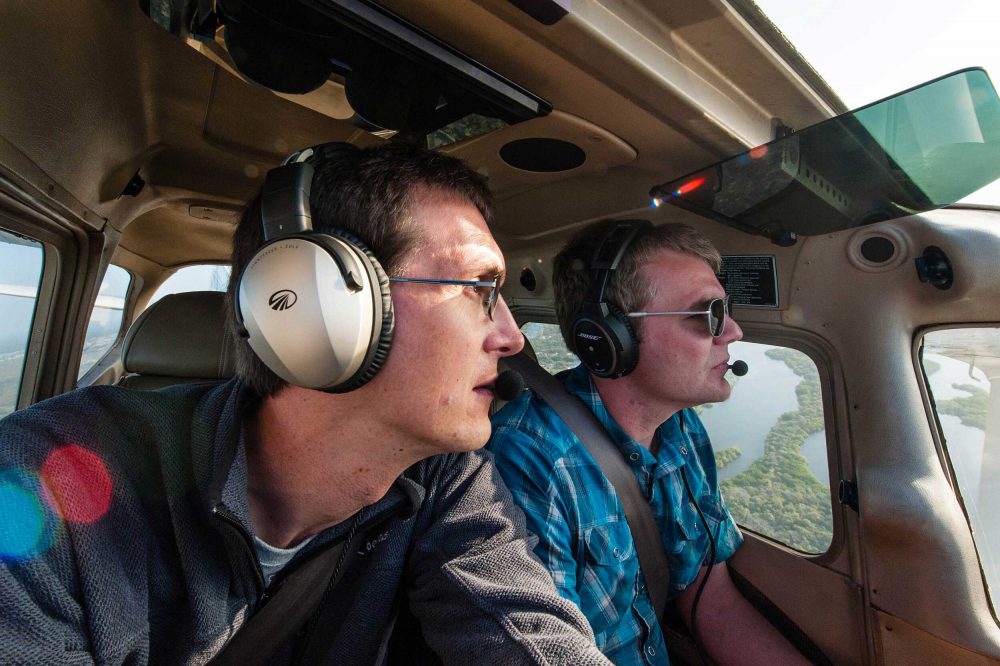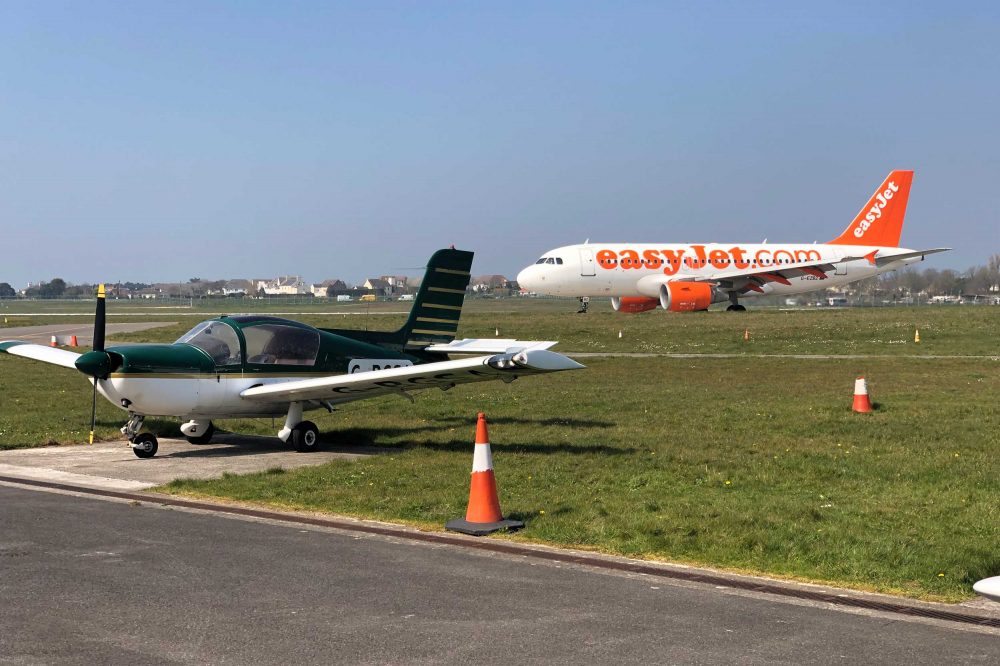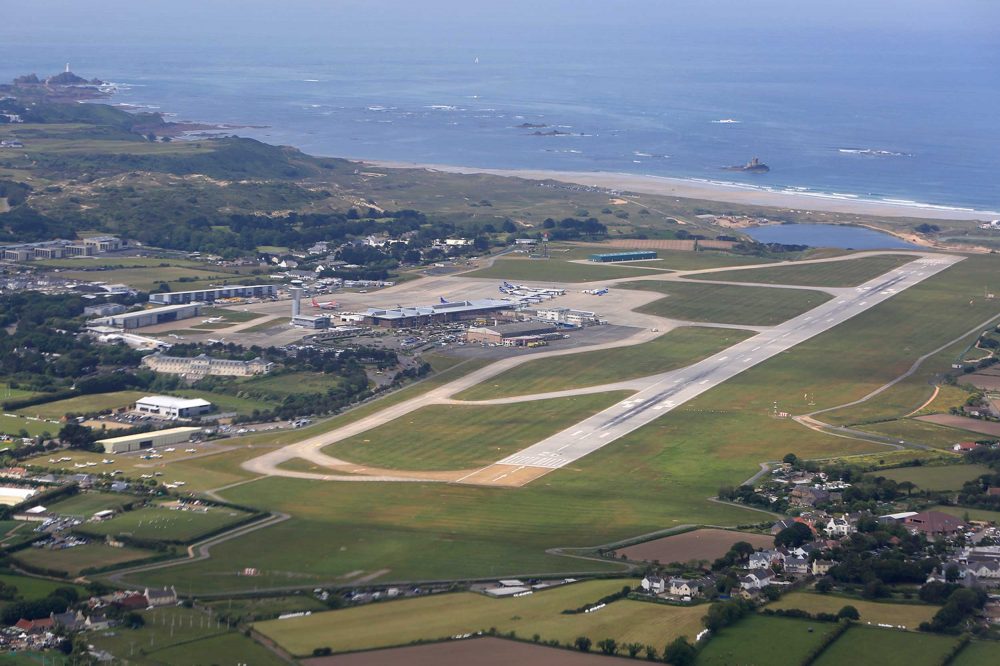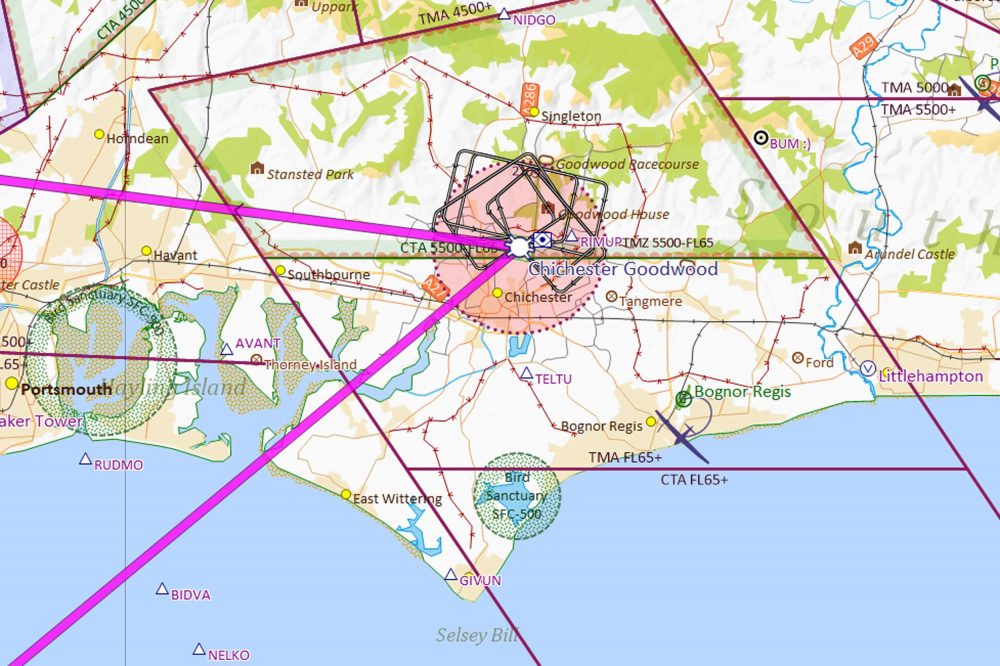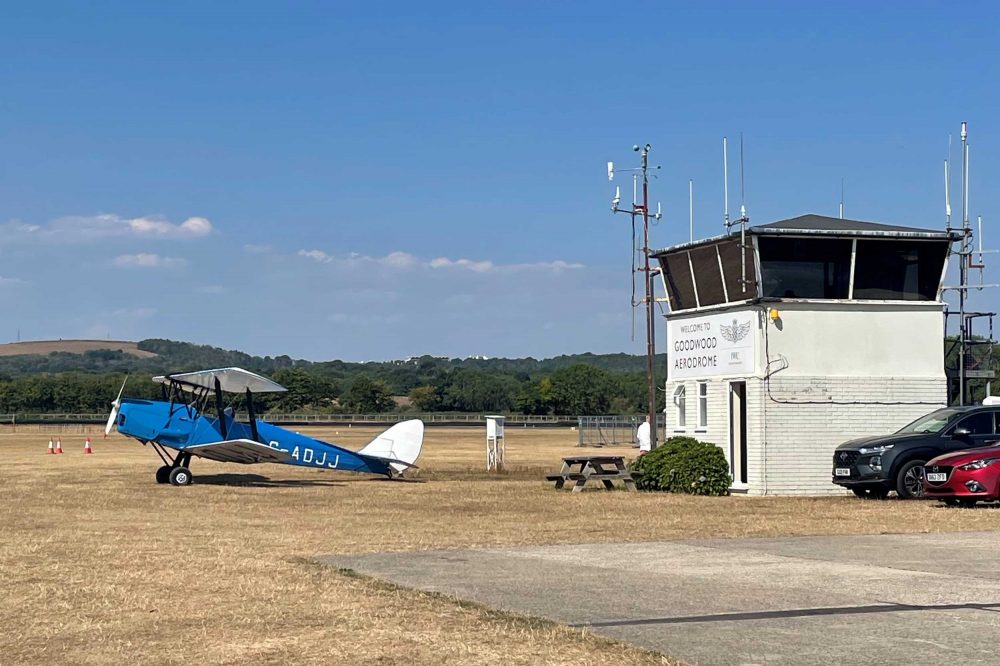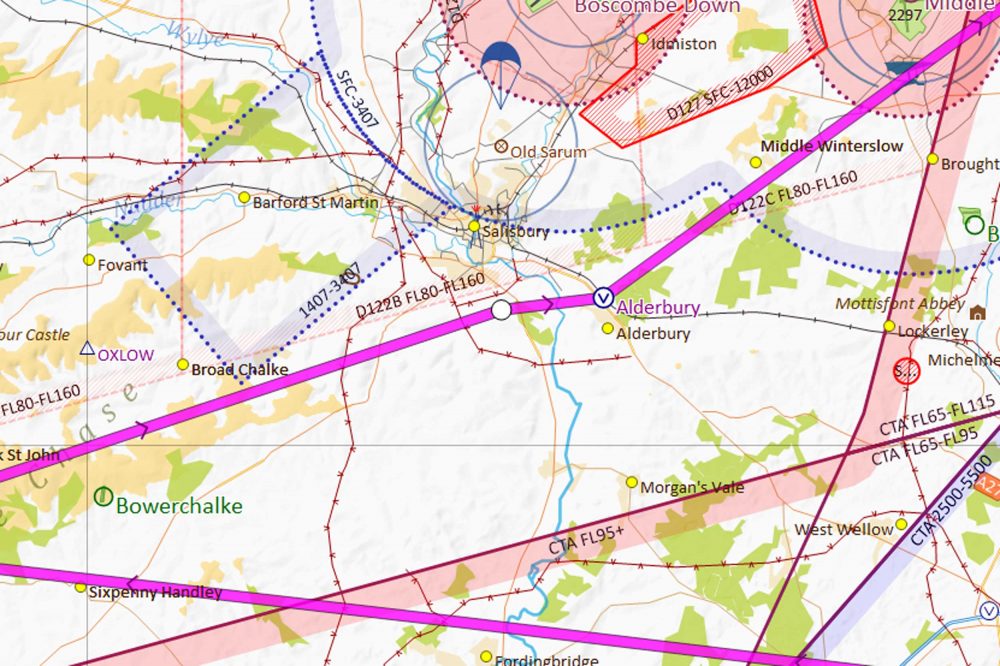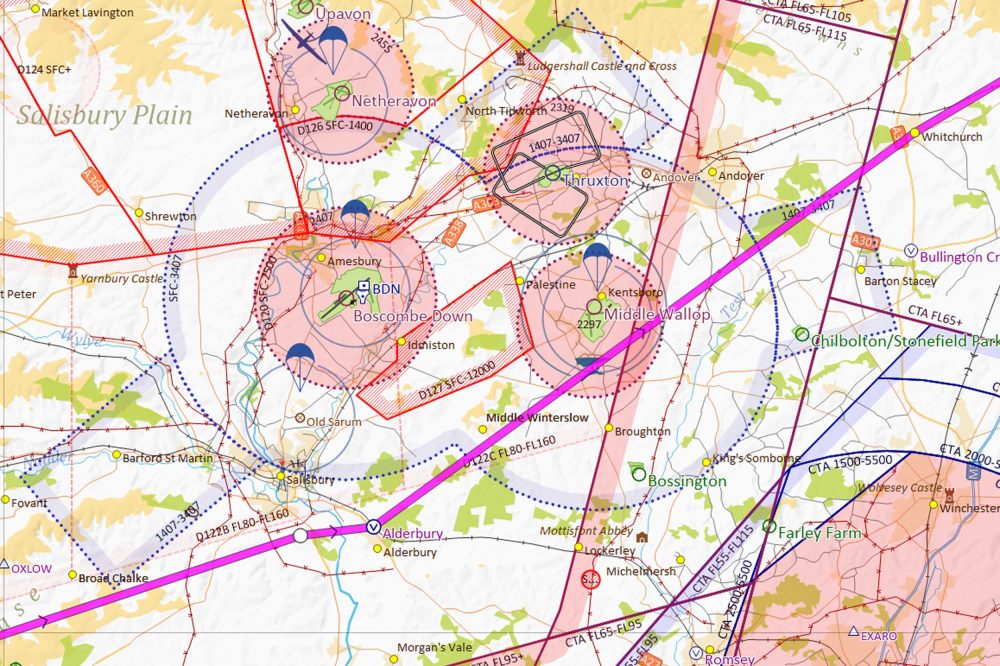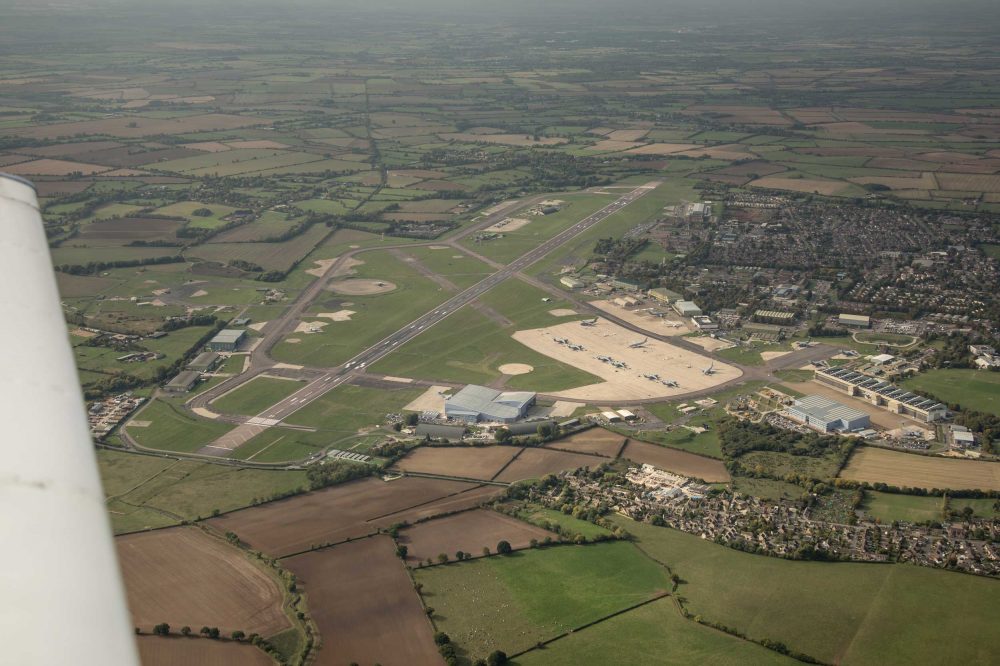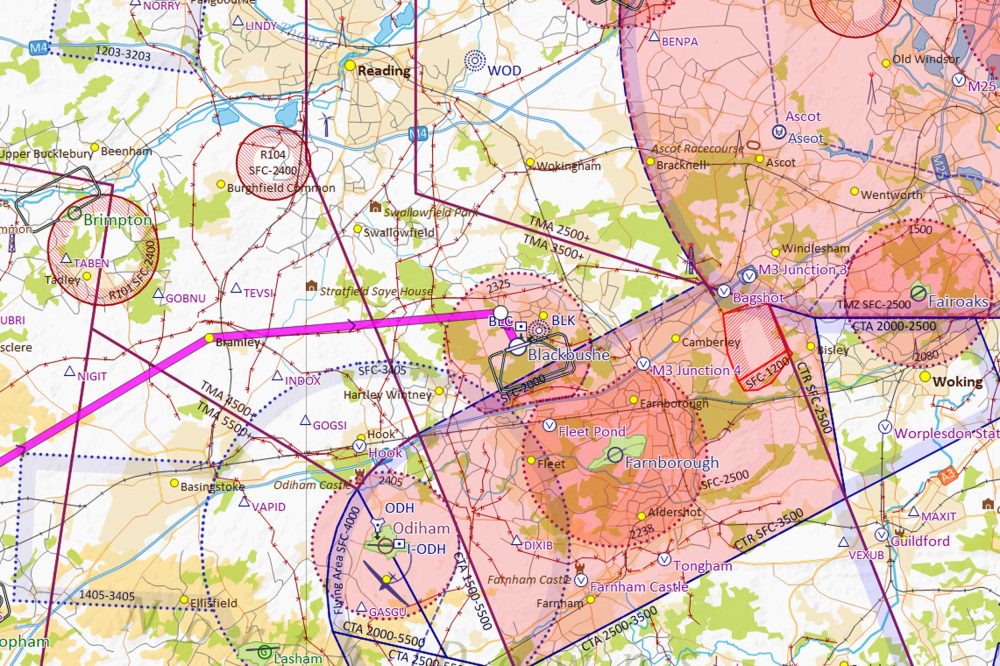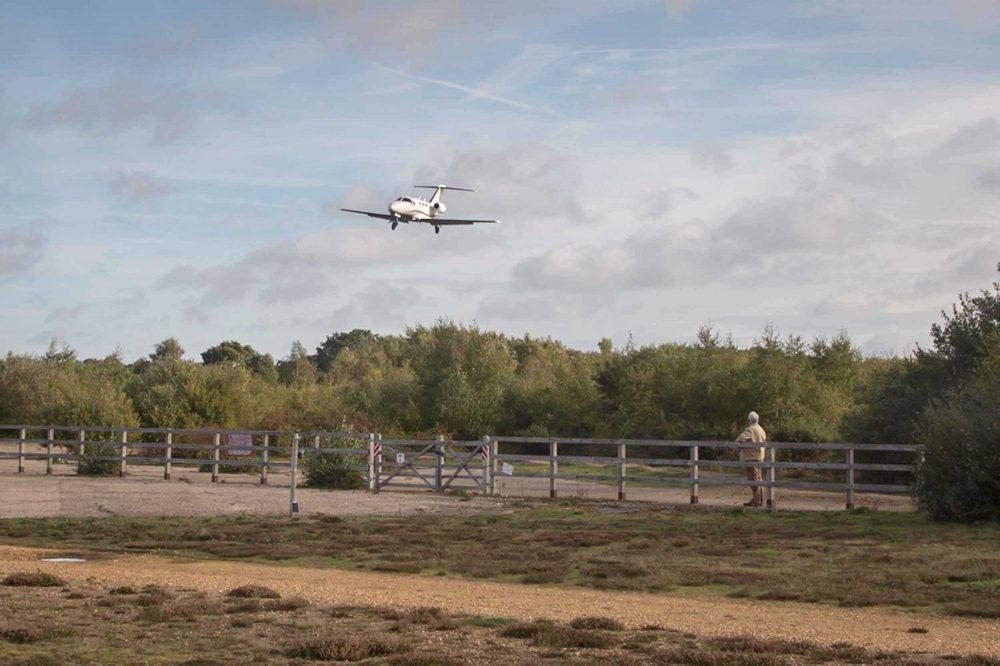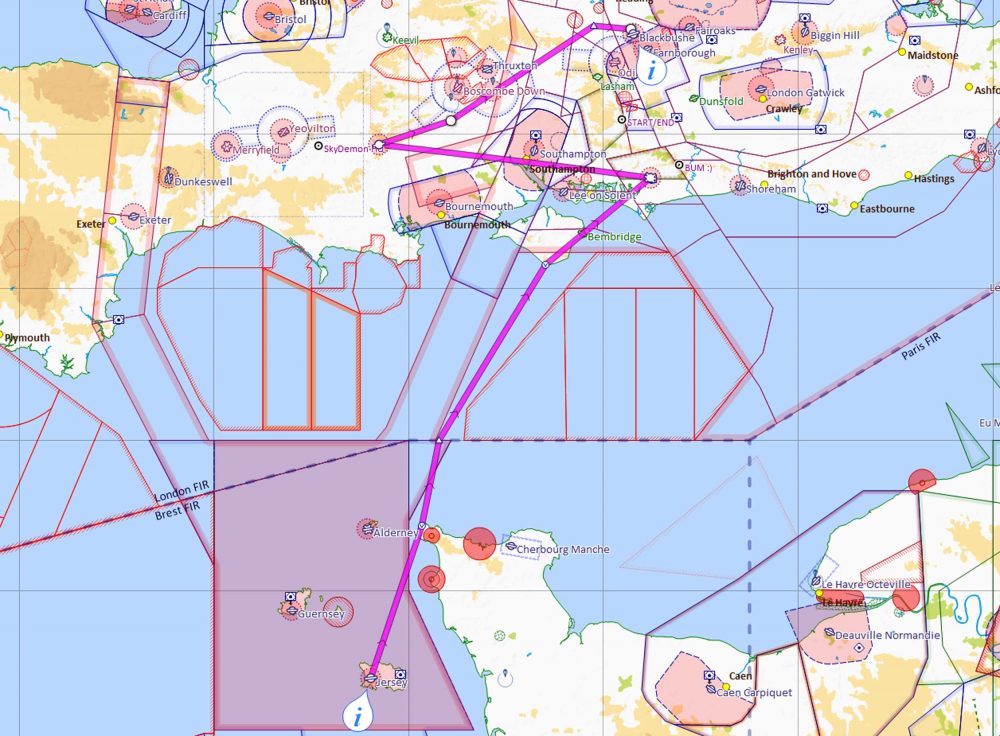Arrival at private strip – SAFETYCOM
Our next stop is at a private strip just south of Salisbury. Before leaving Compton Abbas, check any available information, for example to see if there are specific circuit procedures to follow at your destination, including for noise abatement.
The strip won’t be in the AIP, so ideally you would speak to the owner. You can also see if the strip has a website and what information is shared by SkyDemon.
There is no frequency allocated, so SAFETYCOM (135.480 MHz) will be in use. Because this is a shared frequency, it’s important to use the name of the airfield in all transmissions as, on a good day, calls can carry hundreds of miles and it can get very confusing.
Use the name at the start (fictional in our example below), so the relevant traffic knows to listen out, and at the end, in case your transmission is clipped. There might also be another aircraft on SAFETYCOM with a similar registration, so you could use your full callsign, just in case.
Smallfarm traffic, G-XXXX, 5 miles south-west, joining overhead for runway ZZ, Smallfarm.
CAP413 suggests that, as a minimum, you make calls when approaching the strip, when downwind, and on final. The calls should include the runway and circuit direction you plan to use.
As there will be no-one around to provide basic airfield information, you need to work it out for yourself. If Compton Abbas provided a QNH, you can use this to quickly calculate the QFE for the private strip.
If not, work out the QFE while you’re still on the ground there, and use the difference in elevation between the two airfields to calculate the QFE for the private strip. You could alternatively use the QNH by flying the circuit at the strip elevation plus circuit height. For example, 18 ft plus 800ft – fly at 1,000ft QNH.
Wind can be estimated based on the wind at Compton Abbas. You can also look for clues, such as the direction of any smoke or steam that you see en route. If you decide to go around on final, make a call on SAFETYCOM to let local traffic know your plans.
After landing, make sure you park well clear of the runway. Check how firm the ground is before leaving your aircraft for too long. Departure is similar to arrival. Listen out for other traffic on SAFETYCOM, and fit in with it safely, and remember to ‘top and tail’ all your calls with the strip’s name.
Smallfarm traffic, G-XXXX, backtracking for departure, runway 23, Smallfarm.


